An introduction to soils. Plus – some really fun examples in Washington State.
Introduction:
• What is soil (very basic)?
• Why is soil important?
• Where does soil come from?
• Bringing it all together – What did I leave out, Wine, apples, flowers – is it just the soil (East vs. West).
“Despite all our accomplishments, we owe our existence to a six-inch layer of topsoil and the fact it rains.” – Paul Harvey
1. Introduction
Soil is alive, soil gives us life! Nature has been our teacher and guide – showing us how plants work in an ecosystem and grow in the soil. I’m sure we can all think of an amazing forest or farm where the plant life coming from the soil seems so beautiful and alive. In this article I’d like to focus on one part of our natural systems – soil. And I’m going to keep it basic. If we can understand soil at a simple level, it can act as a building block of greater understanding. Maybe later we’ll post something on soil fertility, soil pests, soil erosion or soil health.
2. What is soil?
There are three basic components that make up soil. Sand – silt – clay. Let’s keep it simple and focus on these three. Its the combination of these three in varying amounts that guides soil texture, which in turn guides how crops can be managed. Sand is the largest soil particle of the three. Great, so whats that mean? In conversations on farm tours – it seems natural for most people to think “sandy soils” hold the most water. Its actually the opposite. I’ll come back to this. Silt is the middle sized particle and clay is the smallest soil component. At a basic level, sand, silt and clay make up soil texture.
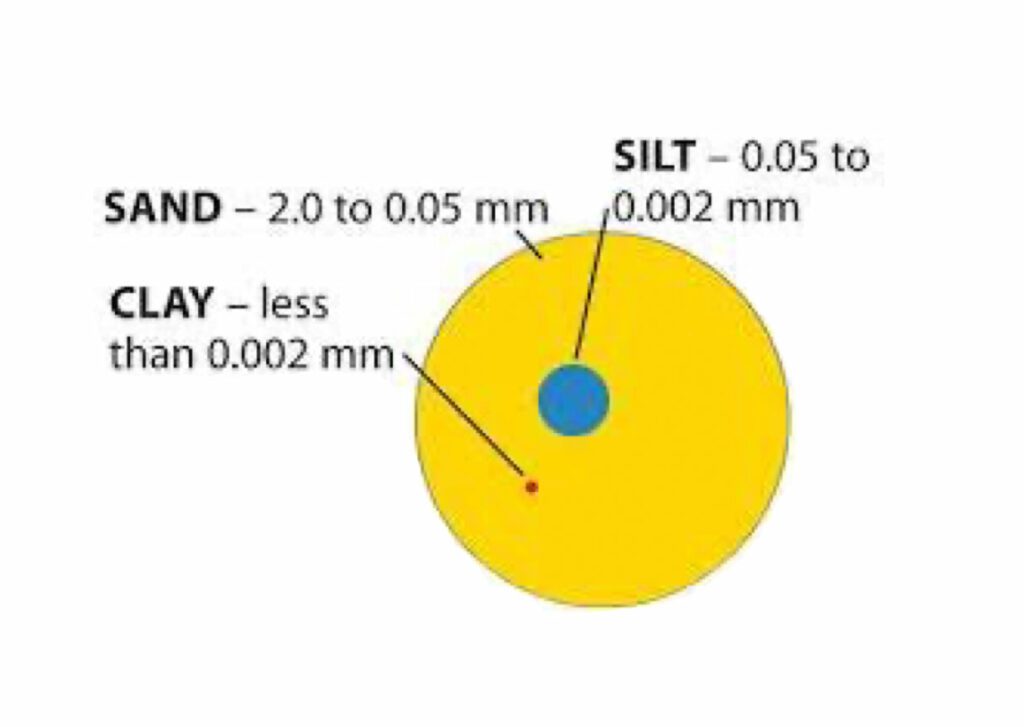
Soil Texture. Source: Soil Science Society of America
I’ve introduced soil texture, now let me go back to water holding capacity, or the soils ability to retain moisture. Moisture retention is related to the surface area of the soil particles. Clay (the smallest) particle) has the greatest surface area and holds moisture the best. Imagine putting a bottomless cup on your kitchen counter, fill it with marbles (pretend sand) – how quickly will the water run out? Now imagine the same bottomless cup filled with flour (pretend clay). The water moves out slowly if it moves through at all. We don’t have to keep going with the example – just understand, silt would be in between sand and clay.
Why have I spent so much time on soil texture? There’s so much to explore and learn about soil – fertility, organic matter, oxygen, biology (yes soil is alive), minerals, depth (there are “horizons” or layers in soils) and parent material. Heck – theres even one soil order with sticks in it. Or if you buy a nice bagged soil for your pots – it likely has peat moss in it. Peat moss gets vacuumed up from peat bogs (bog soil) in Canada or Europe. My point here is, keep it simple. The “concept” of soil texture through the lense of sand – silt and clay percentages provides a good start. The next step would be – hey how can we tell how much of each is in my soil?? That’ll have to be a class on the farm. Which also brings us to our next topic – why is soil important?
3. Why is soil important?
At this point in writing the article I’m asking myself, why have I asked such a huge question? Why is soil important and why would you even care? I’d like to reinforce the quote I started the article with – we basically owe our existence (food) to soil. Whether you’re a plant eater or meat eater or both – soil gives life to both. Now let’s be clear- soil doesn’t do it alone (give life) – plants need water – sunlight & nutrition (aka fertility plants consume from the foil). But its clear – without soil, plants won’t grow (unless we talk hydroponics). No plants = nothing for us to eat or the animals we eat to eat. I think this clearly articulates why soil is so important. Which leads me to briefly talk about soil loss. If soil is so vital to our lives – how do we keep it and how do we keep it healthy? Our soils in many cases have taken 1,000’s of years to form (more on where do soils come some next). In the U.S. and around the world we’re losing our soil at an alarming rate!
This article could get super long if I go on too far here. Think of it this way – soil on the farm – if left “exposed” – or with nothing growing on it, is vulnerable. Vulnerable to wind erosion and vulnerable to water run off. If we rototill in the spring ahead of planting pumpkins, then have a big wind event plus rain. Even if its a little bit – some of our soil left the farm via wind and water erosion. Now imagine this same scenario playing out on farms around the world. Herein lies a scenario contributing to soil loss on our planet (not always rototilling but other forms of cultivation). Our soils have formed over 1,000’s of years. They provide us and all creatures on land life. We must protect them. Soils importance seems pretty clear. We need it to eat. And we need to avoid what I’ve just described (soil loss)… take heart, there are some great solutions to preserve our soils. Maybe in another article we can share soil preservation examples – to name a few… cover crops, minimum or no till and more.
4. Where does soil come from?
Give me grace as I try to boil down where soil comes from by using some examples. Cool fact: Washington State is home to 11 of the 12 world “soil orders”. Therefore, Washington State soils are a great template to describe where soils come from. Volcanoes, glaciers, wind, massive water events & lots of time. Ok, done, that’s how, our soils are formed. Lets go deeper (no pun intended – that’s dry soil humor). I’m going to use some Washington State examples?? They “conceptually” apply to other areas of the world. I’m going to use 3 examples. And the examples won’t be the entire soil formation story for the area described. However, sharing part of how the soil formed introduces the concept. 1. The Palouse in Southeast, WA. 2. The Wahluke Slope, Central, WA 3. Our farm and the Chelan Valley, kind of North Central, WA. Before I go into the examples l think its important to remember what helps soils form – glaciers, water, wind, volcanoes and time.
Example 1:
The Palouse. Located in the Southeastern part of Washington State kind of between Walla Walla and Spokane and into parts of Idaho. If you’ve been to the Palouse region (Pullman is in the heart of it and home to WSU) you’ve seen the massive gentling rolling hills that seem to go on forever. In the late 1800’s settlers discovered the soils immense ability to grow dry land wheat. Some of the highest dry land wheat yields in the world today. From a soil perspective – we’d describe the soils of the Palouse as wind blown loess soils. Loess is made up mostly of silt. In the case of the Palouse soils, they formed over 1,000’s of years as the prevailing winds carried this silt material out of the Columbia Basin (think or look up Moses Lake) and into what is now the rolling hills of the Palouse. The soils in the Columbia Basin can in some cases be very sandy – and its easy to make sense of how the silt/loess moved East. The silt in the Columbia Basin originally came from what is described as Lake Missoula and sediment that was carried as the ice dam burst 100’s of times pushing massive amounts of water across North Idaho and into Washington where sediment settled in various places – including the Columbia Basin. These massive flooding events were called Glacial Lake Outburst floods or often referred to as the Missoula Floods that occurred around the end of the last ice age. Then as I mentioned, once the silt arrived in the Columbia Basin, it was blown by the wind into the Palouse. The concept here is – water and wind movement. See the picture below.
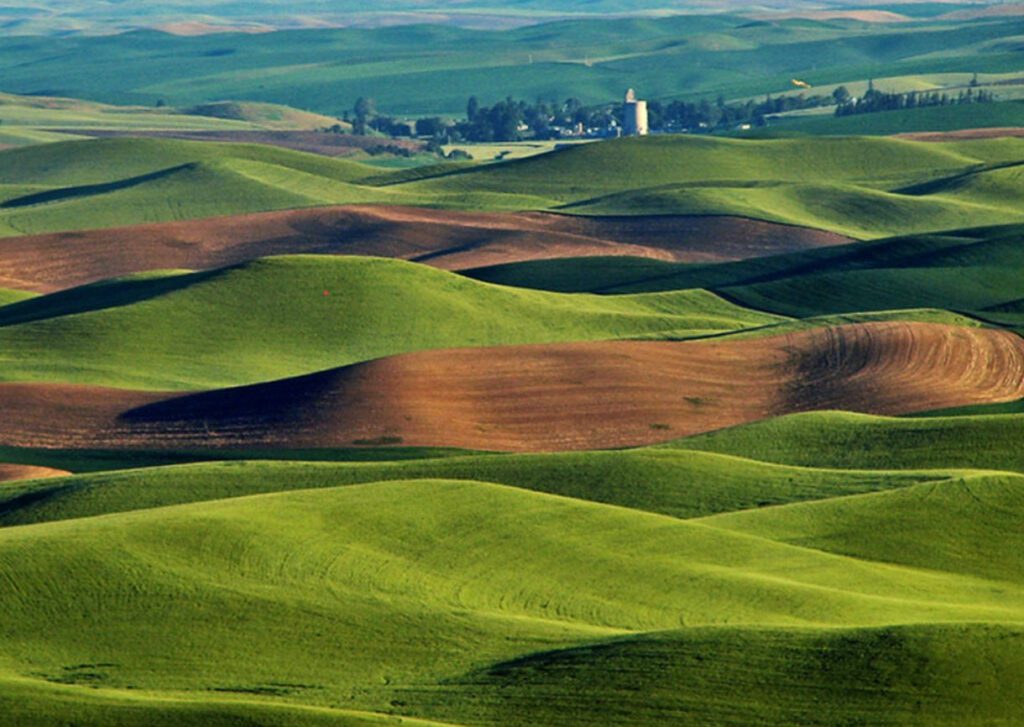
Pictured: The Wind Blown Loess Soils of the Palouse. Source: https://www.flickr.com/photos/88887525@N00/178199167/ – Lynn Davison-Suckow
Example 2:
The Wahluke Slope, located in Central Washington State. Mattawa is a town you can reference or look up. One feature of the Wahluke Slope I’d like to mention up front is how intensely hot it gets there. The soil concept in this example connects back to the Missoula Floods. From an arial view The Wahluke Slope almost looks like a ½ circle, surrounded on the round part of the circle by the Columbia River and on the flat part of the circle by the Saddle Mountains. Its these mountains that played an important role in the formation of the uniquely sandy and rocky soils here. As the Missoula Floods unfolded each time – the massive wall of water was flowing toward the back side of the Saddle Mountains and hit them with incredible force. But, there was a gap in the mountains where the Columbia River flowed through – called Sentinal Gap. Alan Busacca described the wall of water being potentially a mile high. As you can imagine this water hitting the Sentinal Gap, then blowing through it shooting rock and sediment all over the this half circle shape of the Wahluke Slope. Another example of water helping form soil. The soils on the Wahluke Slope lost a lot of their silt from the wind and what remains is a lot of sandy soil in a very hot part of the state which has now been proven to produce amazing tree fruit, potatoes, other vegetables and wine grapes.
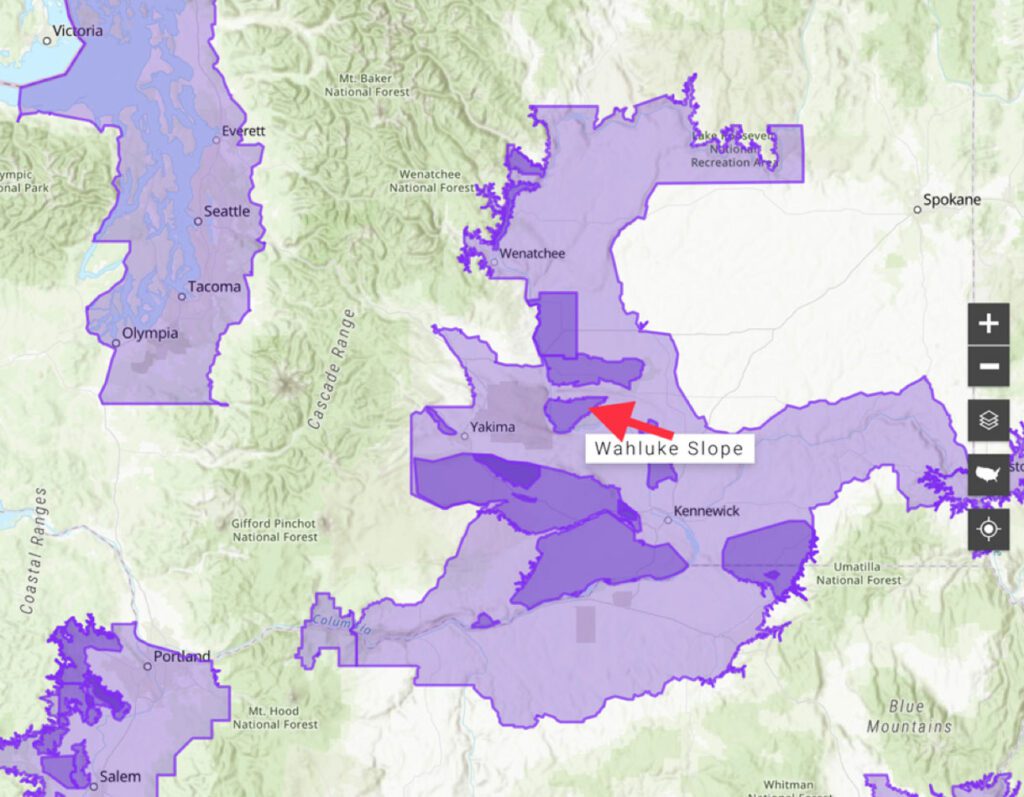
Pictured: You can see the arrow pointing toward the Wahluke Slope AVA. Source: https://www.ttb.gov/images/AVA/
Example 3:
Our farm and the Chelan Valley. Our farm is located on the North Shore of Lake Chelan about 8 miles up lake from the town of Chelan. It sits in the Lake Chelan Valley. This soil formation concept is different than the last two. It involves glaciers and a volcano. I’m going to generalize about our Valley. The very nature of soil formation is nuanced and diverse and by no means will I be able to capture all of it.
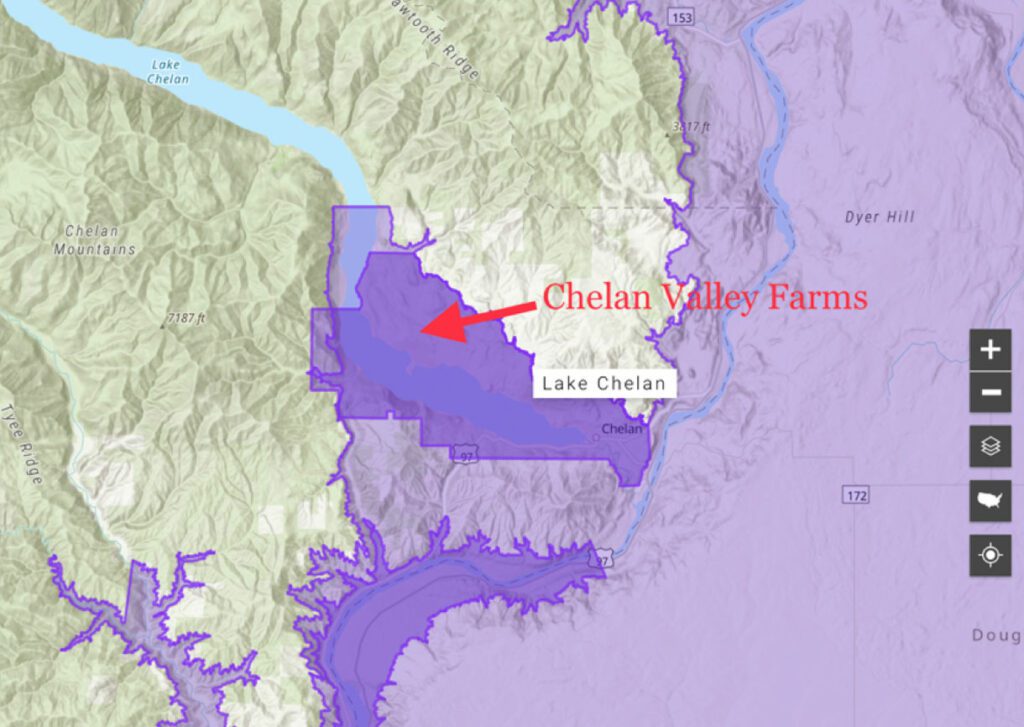
Pictured: Lake Chelan AVA and where Chelan Valley Farms is located.
I’ve got to give a huge shout out to Alan Busacca for helping me understand how the soils in the Lake Chelan Valley were formed. We had the chance to tour our farm and ask some pressing questions while sharing some Zinfandel wine comparisons…. We had dug pits on the farm in 2014 to better understand where to place our vineyard. Not only was there 60” of soil, but there was also pumice scattered throughout the profile. Pumice = really light volcanic rock (think reddish lava rocks in your BBQ). I couldn’t get my head around – how did this pumice get so evenly spread through the 60” of soil? Alan explained.
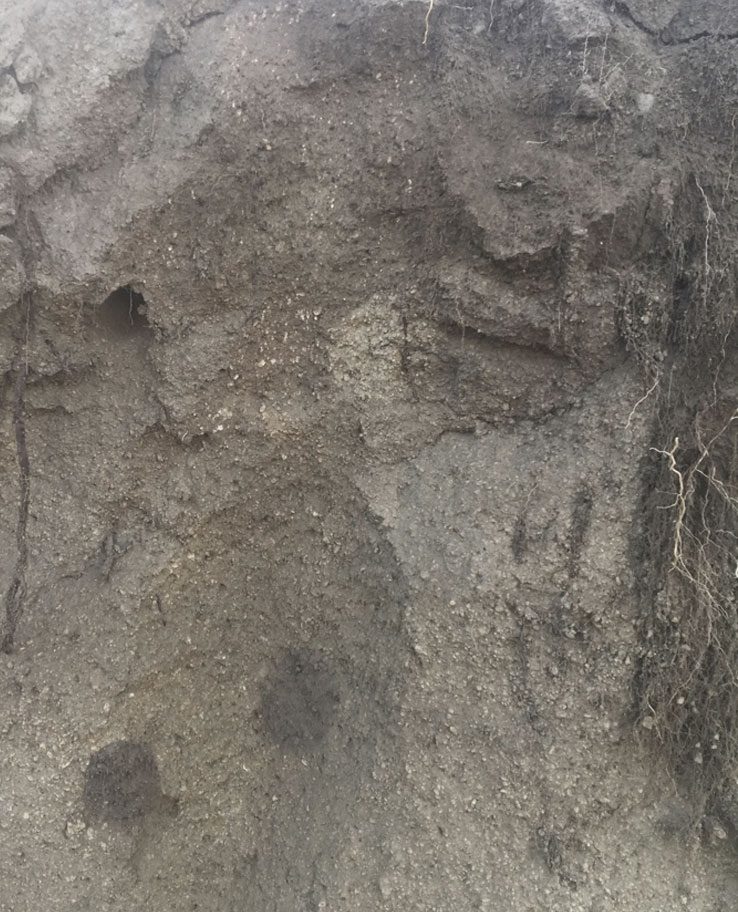
Pictured: look closely and you can see what looks like white small rocks. This is pumice uniformly scattered throughout the soil on our farm.
5. Bringing it all together!
Soil – or more specifically, soil texture is made up of sand, silt and clay. We didn’t dive into fertility, biology, air/oxygen, minerals and more. Next, I explored why soil is important = because it gives us life. We must preserve it and keep it healthy. Then with three examples I described different ways soil can form – volcanoes, water, glaciers, wind and time.
To conclude I’d like to leave some references and highlight what I left out. I didn’t discuss any specific soils outside of Washington State. Having lived in North Carolina and Tennessee for almost five years I was able to see firsthand very old, highly weathered orange soils. The orange color comes from oxidation of the metals in the soil which takes a long, long time. These soils are also heavy in clay – so much different than what we have in the West (although they can be found in the West). Why bring up East vs. West – lets go back to sand, silt and clay. A lot of the soils in the East are high in clay. Which means they hold more water. Add the high humidity to it and you have a combination more difficult for growing grapes. Not impossible – but much different production than our well drained soils in an arid climate. The other thing I didn’t cover is the types of rock – sedimentary, igneous and metamorphic (sources of soil). I didn’t cover types of fertility. I didn’t cover organic matter. Soil is a huge topic. We’re incredibly fortunate to have a small farm in a valley with great soils and climate producing some of the best apples and wine in the world.
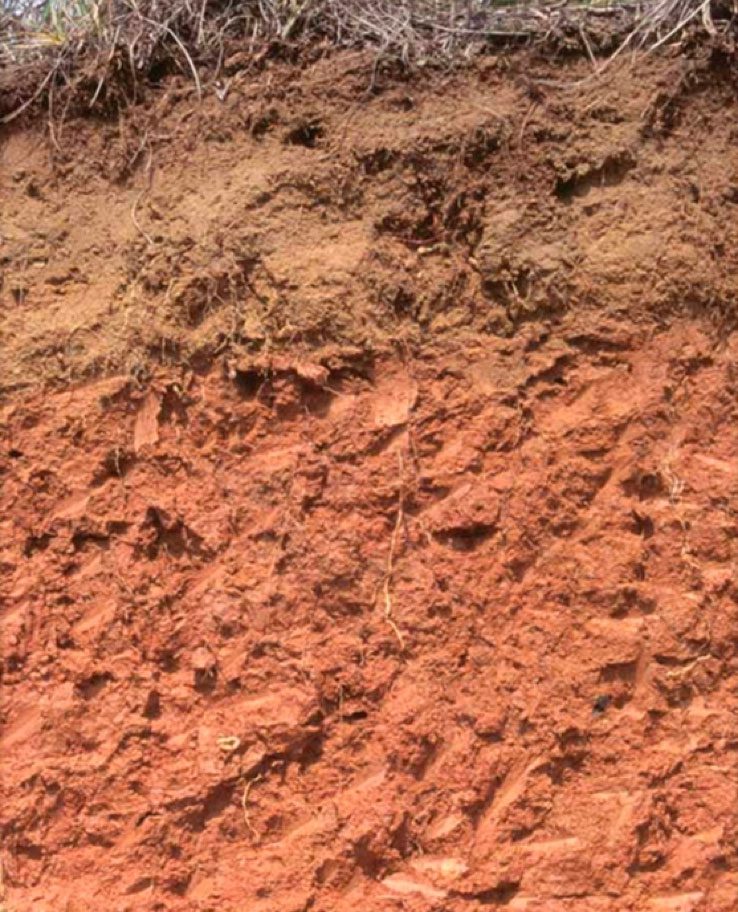
Pictured: typical highly oxidized and mostly clay soils in the Southern United States. Source: https://www.uidaho.edu/cals/soil-orders/ultisols
For some intense and fascinating reading on soil formation: you can check out Alan Busacca’s TTB submission for the Wahluke Slope AVA – https://downloads.regulations.gov/TTB-2007-0016-0003/content.pdf
Alan Busacca’s TTB submission for the Lake Chelan AVA – https://downloads.regulations.gov/TTB-2008-0006-0007/content.pdf
Other resources:
• Soil Science Society of America and Soils 4 Teachers. https://www.soils4teachers.org
• A big shout out to Alan Busacca who is a great teacher, vintner, soil scientist, geologist. He taught multiple undergrad and grad school courses. I’m thankful for his teachings and for challenging me.
• You can find out more about his latest pursuits at: https://windhorsevineyard.com





Thank you Chad-I love this stuff. I am a gardening enthusiast and love learning about soil. It is the gold of having a sustainable garden.
Sue – sorry for the delayed reply!! So glad you enjoyed the article!! And can’t wait to swap soil knowledge!!